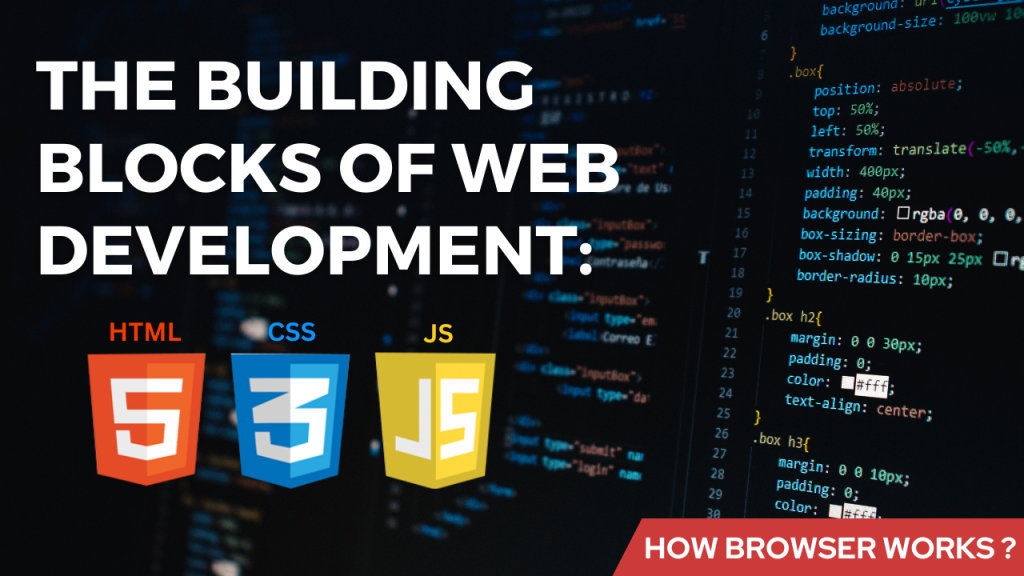
FOUNDATIONS OF CODING & WEB SCRIPTING (HTML, CSS, JS BASICS)
INTRODUCTION
Foundations of Coding and Web Scripting (HTML, CSS, JS Basics)” refers to an introductory educational module or course that covers the essential, client-side technologies used to build websites. The core concept is learning how these three fundamental languages work together to structure, style, and add interactivity to any web page
A foundational course on coding and web scripting with HTML, CSS, and JavaScript typically covers web fundamentals, content structuring, visual styling, and basic interactivity.
Learning Objectives
A course covering these foundations typically aims to teach learners how to:
- Understand basic programming concepts like variables, data types, control structures (if/else statements), and loops using JavaScript.
- Use HTML to create well-structured web pages with semantic elements, media, and hyperlinks.
- Apply CSS to style pages and control the layout and appearance.
- Make web pages interactive using basic JavaScript commands and event handling.
- Plan, create, test, and debug simple web projects using these technologies.
In essence, mastering these three basics provides a strong foundation for anyone interested in front-end web development or understanding how the web works.
Course Content
Module One: Foundational Concepts
- Internet & Web Basics: Understanding how the internet works, web browsers, servers, protocols (HTTP, HTTPS), and client-side vs. server-side programming.
- Development Environment: Setting up the necessary tools, such as text editors, browsers, and potentially version control systems like Git and GitHub.
Module Two: HTML (HyperText Markup Language)
HTML provides the structure and content of a web page. Topics include:
- Basic Document Structure: Anatomy of HTML tags, elements, attributes, and the
basic document layout (<!DOCTYPE>, <html>, <head>, <body>). - Text Formatting: Headings (<h1> to <h6>), paragraphs (<p>), bold, italics, etc..
- Lists & Links: Ordered lists (<ol>), unordered lists (<ul>), and anchor tags (<a>) for
hyperlinks. - Media: Embedding images (<img>), audio, and video elements.
- Tables & Forms: Creating tables for data presentation and forms (<form>, <input>, <select>, <button>) for user input and interaction.
- Semantic HTML5: Using semantic elements (e.g., <header>, <footer>, <section>, <article>) for better structure and accessibility.
Module Three: CSS (Cascading Style Sheets)
CSS controls the visual presentation, style, and layout of the web page. Topics include:
- CSS Basics: Syntax, how to apply styles (inline, internal, external stylesheets), and the cascade algorithm.
- Selectors: Element, class, ID, and attribute selectors, as well as pseudo-classes and pseudo-elements.
- Styling Properties: Colors, backgrounds, fonts, text properties (size, spacing, alignment), margins, padding, and borders (the Box Model).
- Layouts: Normal flow, display properties (block, inline, inline-block, none), positioning (static, relative, absolute, fixed), floats, Flexbox, and Grid layouts.
- Responsive Design: Using relative units and media queries to make websites viewable on different screen sizes and devices.
Module Four: JavaScript Basics (JS)
JavaScript is a scripting language that adds dynamic and interactive functionality to web pages. Topics include:
- Programming Fundamentals: Variables, data types, operators, expressions, and input/output.
- Control Flow: Conditional statements (if/else, switch) and loops (for, while).
- Functions: Defining and using functions to encapsulate and reuse logic.
- Arrays & Objects: Working with data structures like arrays and basic object creation.
- The Document Object Model (DOM): Understanding the DOM tree structure and how to access and manipulate HTML elements using JavaScript.
- Event Handling: Implementing event-driven programming (e.g., onClick, onChange) to respond to user actions.
Duration: Three (3) days Fee: N300,000
Phone No:
08052062320, 08095284269, 07085271570
Email Address
training@nazellinkconsult.com info@nazellinkconsult.com
